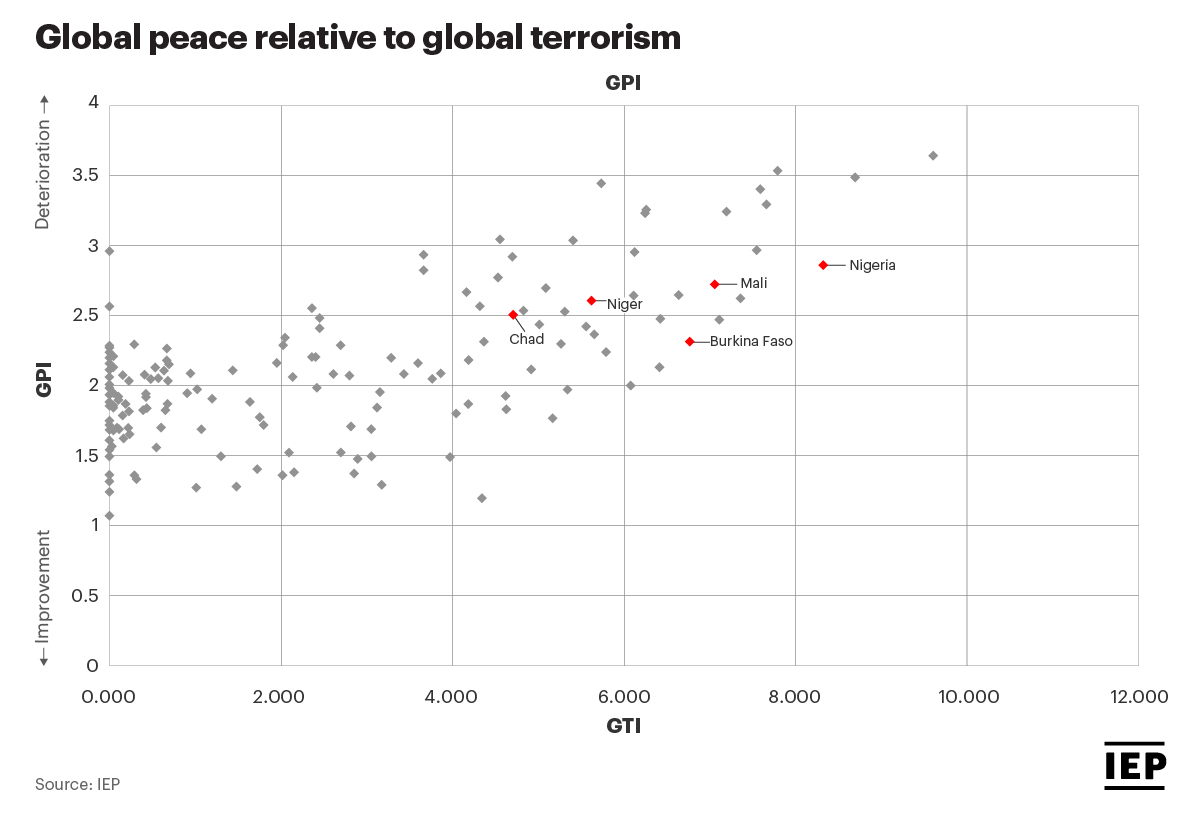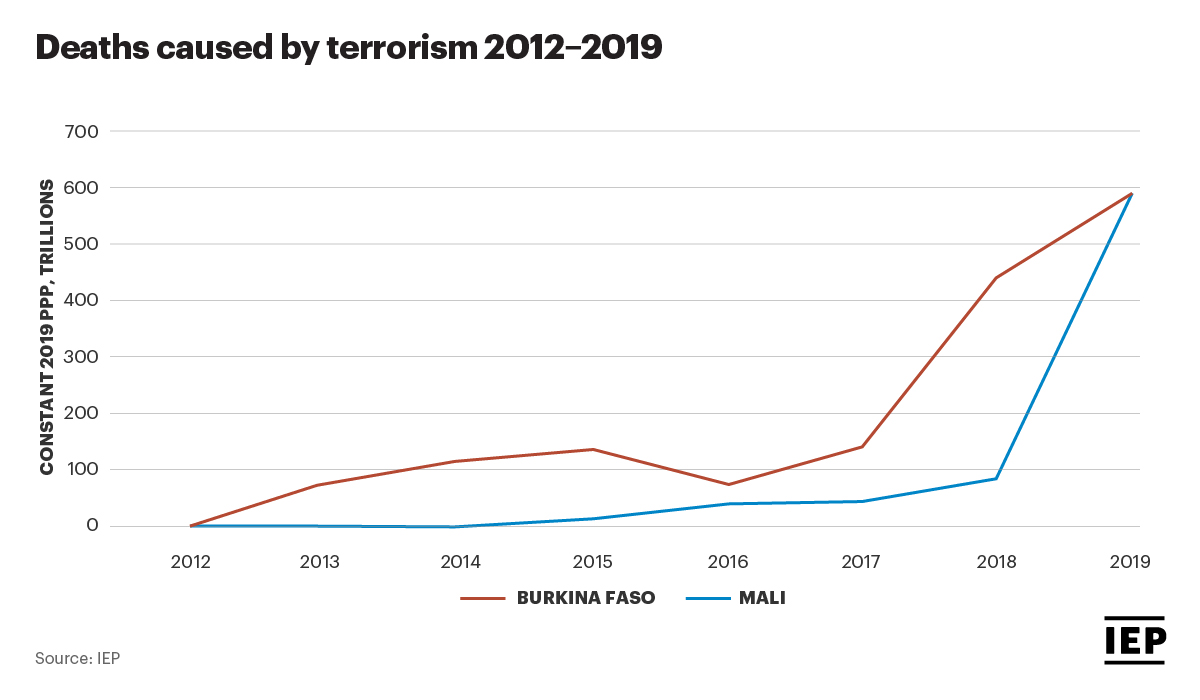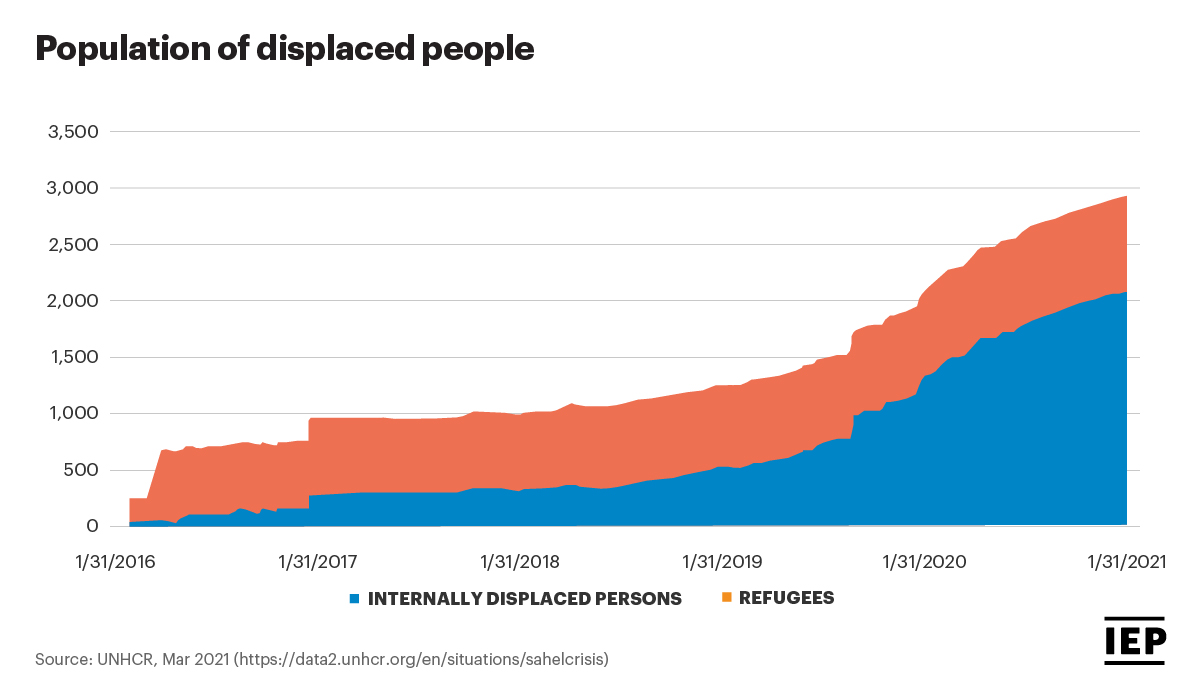The Sahel region of Africa comprises of one of the world’s harshest climates and faces some of the biggest challenges to development and peace.
Stretching 5000 kms from Senegal’s Atlantic shorelines across to the Red Sea, the area transforms from the dry and semi-arid Saharan desert climate of North Africa to the humid and tropical conditions of Sub-Saharan Africa.
Many of the world’s poorest and insecure countries are found in the Sahel including Mali, Burkina Faso, Chad and Niger. In recent years, the region has become an epicentre for conflict. Especially with the expansion of several extremist groups within the region.

The 2020 Ecological Threat Register recognised the Sahel belt as one of three ecological hotspots, which include regions with increased environmental stress that are more prone to collapse.
The Sahel climate is characterised by extreme temperatures with fluctuating periods of rainfall and intense drought. The area is particularly vulnerable to climate change, according to the United Nations, with temperatures increasing at 1.5 times the rate of the global average.
In recent years, droughts have been more frequent in the already-arid conditions and increasingly posing challenges for crop production.

Years of land clearing and poor farming practices has resulted in widespread desertification in the region. Extensive soil erosion has degraded the land to the point of unproductivity.
In Burkina Faso, one third of the country’s territory, or over nine million hectares of once productive land has been degraded. Land degradation projects to expand by 360,000 hectares per year.
Agriculture is one of the main sources of income and employment for the region. As land becomes baron, the ability to produce crops and raise livestock becomes difficult.
Widespread desertification puts increased strain on economic livelihoods and food production, resulting in low social outcomes, food insecurity and the forced migration of communities.
The region’s growing population is placing further strain on the environment, according to the 2020 Ecological Threat Register.
Countries in the Sahel maintain some of the fastest growing populations in the world. Burkina Faso, Nigeria, Chad and Mali are all among the top twenty countries with the fastest projected population growth.
Niger, with a current population of 24.2 million ranks number one in the world in this category. By 2050, Niger projects to increase population size by 175%, bringing its population size over 65 million.
This level of growth drastically outpaces the region’s economic development, resulting in a decline in living standards and greater competition for resources.
The increase also puts an increased strain on employment and economic opportunity, particularly for the region’s large youth population.

Environmental stress and overpopulation can lead to high levels of food insecurity and water scarcity. Tumultuous floods and droughts in Niger caused a 12% decline in cereal production from 2019 to 2020.
Around 83% of the population, or 17.8 million people, suffer from food insecurity. Its neighbouring country, Chad, has the lowest percentage of population with access to basic drinking water in the world, equal to just 39%.
In addition, Chad has the highest mortality rate due to unsafe water at 101 people per 100,000. In comparison, the global mortality rate is 12 people per 100,000.
As the population increases, along with economic development and shifting consumption patterns, in addition to the effects of climate change, stresses on water supplies will accelerate in the coming decades.

The geographical location, vastness and lack of state authority also makes the Sahel attractive for organised crime. The trafficking of drugs and weaponry, as well as human trafficking and migrant smuggling further contribute to destabilising the region.
The most prominent cause of insecurity in the region in recent years has been the significant rise of conflict, further complicated by other destabilising factors.
Growing terrorist threats and attacks are central to this problem. Alongside terror threats, deepening environmental challenges are exacerbating the competition for resources and creating further tensions between groups.
These issues are compounded by other destabilising factors including food insecurity, COVID-19 and the displacement or people as a result of conflict.

A significant cause of violence in the Sahel has been the rise of extremist movements within the region. Religious extremist groups and militias have gained influence in the Sahel region over the past five years.
This has caused the region to become an epicentre for conflict. Nigeria ranked number three in the world in the 2020 Global Terrorist Index, behind only Afghanistan and Iraq. Mali and Burkina Faso hold the 11th and 12th positions.
Following counterterrorism efforts in the Middle East, terrorist activity shifted to the Sahel. Terrorist groups leveraged the regions’ vastness, instability and underdevelopment.
Many groups and militias exploited existing ethnic tensions and gained influence among vulnerable populations. High levels of youth unemployment are vulnerable to recruitment by individuals and groups that promise opportunities for a better life.
Burkina Faso and Mali have both seen a steady increase in terrorist violence attributed to Jamaat Nusrat al-Islam wal Muslimin, an Al-Qa’ida affiliate, as well as the Islamic State from the Greater Sahara as the two groups clash along the Burkina Faso-Mali border.
Burkina Faso had its deadliest year on record in 2019 with 593 deaths and 122 incidents. In 2013, only one terrorism death was recorded. Mali, similarly, saw an increase from just 30 in 2009 to 592 in 2019.

Boko Haram remains the deadliest group in the Sub-Saharan region. It operates mostly within the Lake Chad basin region of Nigeria, Cameroon, Chad and Niger.
The jihadi group increased its terrorist activity in 2019 with ongoing attacks targeting both civilians and military personnel. In the past ten years, there were over 37,500 combat related deaths, and over 19,000 deaths from terrorism.
Resource scarcity and the consequential movement of people can become key stressors for social unrest and cause disputes and violence.
Nigeria offers an example of how resource shocks and rapid population growth can trigger increased social instability, the 2020 Ecological Threat Register shows.
For many years, reduced rainfall, higher temperatures and recurrent droughts have led to the encroachment of Fulani herders and pastoralists on established farmland in search of water. Water stress has also caused farm expansion onto traditional grazing areas.
Violence has ensued as farmers and the Fulani compete for land and water resources. Since 2016, this conflict has led to over 3,600 deaths.
In Mali during 2019, the displacement of 50,000 people exacerbated feuds between Malawian villagers and Fulani herders from Burkina Faso. These feuds led to an outbreak of violence that resulted in the death of at least 30 people.
Persistent insecurity and conflict have led to increasing displacements of people within the region. By the end of 2020, 10,000 civilians were killed.
In a growing humanitarian crisis, over 2.5 million people have been internally displaced within the Sahel region. That is a twenty-fold increase in just two years.
The majority of the displaced are women and children, with over 75% remaining without adequate shelter. Large movements of people place additional pressures on the country’s already scarce resources and threatens intercommunal rivalries.

The UN’s Food and Agriculture Organisation estimates that production deficits, along with a worsening security situation resulted in 15.5 million people in the region becoming food insecure in 2020. This is an alarming increase from the year before.
The conflict, displacement, along with extreme flooding has resulted in the loss of crops and livestock. Much of the region faces critical food shortages.
The COVID-19 pandemic has further exacerbated existing challenges.
Despite low reported case-numbers, the UN estimates around 30 million people within the region, or 9% of the population, have been pushed into poverty.
Furthermore, at least 24 million people are in need of humanitarian assistance as a result of the policies and economic consequences resulting from the pandemic.
Restrictions and ongoing security concerns make it difficult for vulnerable communities to access aid and assistance.
While the region is fraught with challenges, there are opportunities to generate sustainable prosperity.
The Great Green Wall initiative is already underway and aims to restore over 100 million hectares of degraded land within the region. It also hopes to create more than 10 million sustainable jobs.
The African-led project involves planting trees and regenerating soil to increase fertile land, create economic opportunities, food security and climate resilience. Once completed, it will be the largest living structure on the planet.